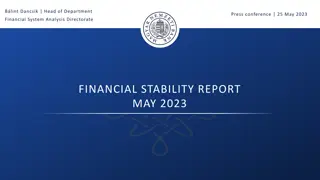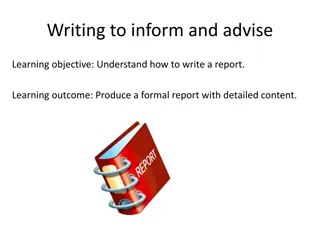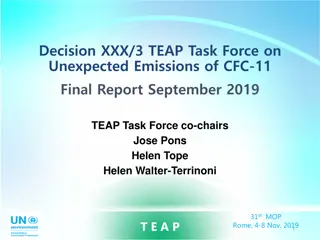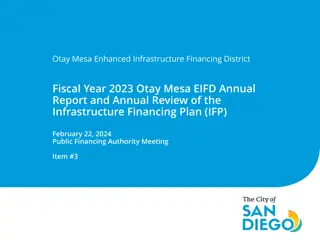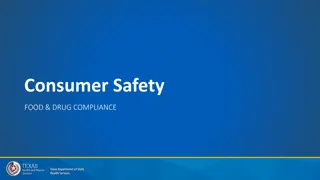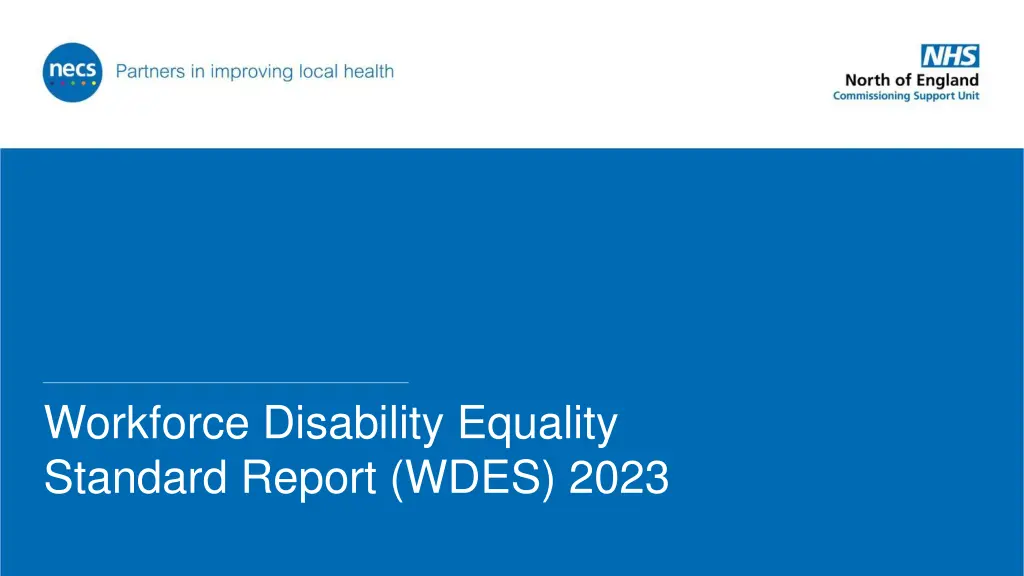
NECS Workforce Disability Equality Standard Report 2023 Insights
"Explore NECS performance against WDES indicators for 2022/23 in this report. Gain insights into workforce breakdown and disability equality measures. Review achievements and action plan for progress. Discover comparative data for future evaluations."
Download Presentation

Please find below an Image/Link to download the presentation.
The content on the website is provided AS IS for your information and personal use only. It may not be sold, licensed, or shared on other websites without obtaining consent from the author. If you encounter any issues during the download, it is possible that the publisher has removed the file from their server.
You are allowed to download the files provided on this website for personal or commercial use, subject to the condition that they are used lawfully. All files are the property of their respective owners.
The content on the website is provided AS IS for your information and personal use only. It may not be sold, licensed, or shared on other websites without obtaining consent from the author.
E N D
Presentation Transcript
Workforce Disability Equality Standard Report (WDES) 2023
The WDES Background and Context The Workforce Disability Equality Standard (WDES) was introduced within the NHS in 2019 as a mandatory reporting tool for all NHS provider Trusts. Its purpose is to ensure that employees living with disabilities, long term health conditions or illnesses have equal access to career opportunities and receive fair treatment in the workplace. The WDES comprises a set of ten specific measures (metrics) which enables NHS organisations to compare the workplace and career experiences of disabled and non-disabled colleagues. NHS organisations use the metrics data to develop and publish an action plan. Year on year comparison enables NHS organisations to demonstrate progress against the indicators of disability equality. There is a requirement for NHS Trusts to report progress on their performance by publishing their performance and progress against the WDES and submit this information to NHSE on an annual basis. Commissioning Support Units (CSUs) have not previously been required to report on this data, however, this will become a requirement for CSUs from 2024 onwards. 2
The WDES Background and Context This report provides information on NECS performance against each of the ten WDES indicators for 2022/23. The report also highlights our key achievements, the areas we need to do better in, and an overview of the 2022/2023 action plan. Data comparisons have only been made for Indicators 4-9 as this is the first time the WDES report is being completed by NECS. Whilst the WDES report is not required to be undertaken by CSUs for 2022/23, NECS has prepared a WDES submission and reviewed trends and progress against the indicators in order to provide comparative data for next year, which is accepted best practice. 3
NECS Performance Against the WDES Indicators 5
WDES Indicator 1: Overall Breakdown of Workforce Data Percentage of colleagues in each of the AfC Bands 1-9 or medical and dental subgroups and VSM (including executive board members) compared with the percentage of colleagues in the overall workforce NECS Workforce Disability Summary Number of Colleagues in the Workforce Disabled Non-Disabled Unknown Total 189 1630 159 1978 Count 8% 10% 9.6% 82.4% 8.0% Percentage Number of Colleagues in the Workforce by Band (count) Disabled Disabled Non- Disabled Unknown Total Not Disabled Unknown 54 304 20 378 Bands 1-4 108 840 98 1046 Bands 5-7 82% 16 352 21 389 Bands 8a-8b 11 134 20 165 Bands 8c-VSM 6
WDES Indicator 1: Overall Breakdown of Workforce Data Percentage of colleagues in each of the AfC Bands 1-9 or medical and dental subgroups and VSM (including executive board members) compared with the percentage of colleagues in the overall workforce The workforce data indicates that the proportion of colleagues who have confirmed that they are living with a disability, long term health condition or illness (9.6%) is only slightly more than the number of colleagues whose disability status is unknown (8.0%). In addition, the greatest number of disabled colleagues fall within bands 5-7 (108 disabled colleagues), with the numbers significantly reducing for bands 8a-8b (16 disabled colleagues) and 8c-VSM (11 disabled colleagues). For bands 8a-8b and bands 8c-VSM, the number of colleagues who have chosen not to share their disability status is greater than the number of disabled colleagues. 7
WDES Indicator 2: Recruitment Compare the data for Disabled and Non-Disabled colleagues: Relative likelihood of colleagues being appointed from shortlisting across all posts. NECS Recruitment Summary 2022/23 Shortlisting Appointment Relative Likelihood of non-disabled colleagues being appointed from shortlisting compared to disabled colleagues 196 28 Disabled 1893 221 0.82 Non-Disabled 66 8 Unknown More non-disabled applicants are shortlisted than disabled applicants. However, the relative likelihood of non-disabled applicants being appointed from shortlisting is lower than disabled applicants. This shows that despite there being fewer disabled applicants being shortlisted, there is a higher likelihood that they would be appointed to a role. NB. It should be noted that reporting data was not available during the time period where there was a switch over to the new NHS Jobs platform and as such, the figures above may not be entirely representative. 8
WDES Indicator 3: Formal Capability Processes The Relative likelihood of colleagues entering the formal capability process, as measured by entry into a formal capability investigation NECS records and monitors all capability cases based on protected characteristics and makes note of the reason behind the case. This indicator looks at the number of capability cases over a 2-year period and considers whether they might be on the grounds on ill health Where the number of colleagues entering a formal capability process is 5 or less, NECS will not disclose or publish the information for reporting purposes to maintain confidentiality and anonymity of individuals subject to such processes The total number of colleagues that entered a formal capability process on any grounds across NECS over the 2 years is 16, (average of 8 over the 2 years). As certain disability status groups comprise 5 or less colleagues who have entered the formal capability process, it was not possible to share this information in this report. However, analysis of the data shows that disabled colleagues are 1.33 times more likely to enter a disciplinary process than their non-disabled counterparts 9 No colleagues have entered the formal capability process on the grounds of ill health in 2022/23
WDES Indicators 4-9: Staff Survey Questions Percentage of staff that said YES to the WDES questions in the 2022 Staff Survey and a comparison with the 2021 results Disability Status Disability Status Staff Survey indicator (WDES) Survey results Staff Survey indicator (WDES) Survey results 2021 2022 2021 2022 Indicator 4ai. Percentage of staff experiencing harassment, bullying or abuse from patients/service users, their relatives or the public in the last 12 months Disabled 56.3% 58.2% Disabled 14.3% 10.9% Indicator 5. Percentage of staff who believe that their organisation provides equal opportunities for career progression or promotion Non-Disabled 66.5% 68.0% Non-Disabled 5.3% 5.5% Indicator 6. Percentage of staff who have felt pressure from their manager to come to work, despite not feeling well enough to perform their duties Indicator 4aii. Percentage of staff experiencing harassment, bullying or abuse from managers in the last 12 months Disabled 18.1% 17.2% Disabled 13.2% 11.9% Non-Disabled 5.5% 4.7% Non-Disabled 12.0% 9.7% Indicator 4aiii. Percentage of staff experiencing harassment, bullying or abuse from other colleagues in the last 12 months Disabled 8.3% 7.9% Disabled 45.9% 47.7% Indicator 7. Percentage of staff satisfied with the extent to which their organisation values their work Non-Disabled 3.7% 3.3% Non-Disabled 60.7% 59.3% Indicator 4b- Percentage of staff saying that the last time they experienced harassment, bullying or abuse at work, they or a colleague reported it Indicator 8- Percentage of staff with a long lasting health condition or illness saying their employer has made reasonable adjustment(s) to enable them to carry out their work. Disabled 50.9% 41.3% Disabled - 81.7% 10 Non-Disabled 40.4% 40.7%
WDES Indicators 4-9: Staff Survey Questions Continued Percentage of colleagues that said YES to the WDES questions in the 2022 Staff Survey and a comparison with the 2021 results In 2022/2023, performance against the staff survey indicators has been largely positive with improvements in experience for both disabled and non-disabled colleagues for indicators 4aii, 4aiii, 5 and 6. Disability Status Staff Survey indicator (WDES) Survey results There has been an increase in negative experiences for non- disabled colleague members for indicators 4ai, 7 and 9a relating to experiencing harassment, bullying and abuse from patients/service users, their relatives or the public in the last 12 months; how much they feel their work is valued by the organisation; and staff engagement. 2021 2022 Disabled 6.6 6.6 Indicator 9a. Staff engagement score (0-10) Non-Disabled 7.1 7.0 Indicator 9b. Has your organisation taken action to facilitate the voices of your disabled staff to be heard? (yes) or (no) Unfortunately, there has been a reduction in the number of disabled colleagues reporting harassment, bullying or abuse, as shown in indicator 4b. However, there are still more disabled colleagues reporting this on than non-disabled colleagues. - Overall, while colleague experience has improved, disabled colleagues have a worse experience than non-disabled colleagues for all indicators, except indicator 4b where reporting is higher for disabled staff. 11
WDES Indicator 10: Board Member Representation Percentage difference between the organisations Board (Exec) membership and its overall workforce Board (Exec and Non-Exec) Membership Disabled Non-Disabled Unknown Total 1 5 2 8 Count The data indicates that the number of disabled colleagues on the Board (Exec Team) is largely representative of the disability demographics in the workforce. However, there is a higher percentage of Board Members who have chosen not to share their disability status than there are in the workforce. 12.5% 62.5% 25.0% Percentage Number of Colleagues in the Workforce Disabled Non-Disabled Unknown Total 189 1630 159 1978 Count 9.6% 82.4% 8.0% Percentage 12
What we have done well It can be seen that 9.6% of our workforce identify as having a disability or long-term illness. While this is less than the current population of disabled people in England and Wales, which is estimated at 17.8% (2021 Census), NECS are the joint 5th organisation with the highest number of disabled staff within the workforce across England A good range for the relative likelihood of an applicant s appointment from shortlisting is between 0.85 and 1.5. We fall just outside this, with a relative likelihood of 0.82, indicating that disabled applicants are slightly more likely to be appointed from shortlisting than non-disabled applicants. While the ideal aim is to achieve a relative likelihood of 1, where disabled and non-disabled applicants have an equal likelihood of appointment, we are doing better than organisations who are less likely to appoint disabled applicants No colleagues have entered the formal capability process on the grounds of ill health across 2021/23 There has been a reduction in the percentage of disabled colleagues experiencing harassment, bullying and abuse from patients/service users, relatives, members of the public, managers and colleagues over the last 12 months 14
What we have done well There has also been a reduction in the number of disabled colleagues experiencing presenteeism and pressure to work despite feeling unwell. There have been increases in the number disabled colleagues believing the organisation offers equal opportunities and in the number of disabled colleagues feeling their work is valued by the organisation In terms of the Executive Team, the number of disabled members (12.5%) are largely comparable to the percentage of disabled colleagues in the workforce (9.6%) 15
Where we need to improve While the greatest number of disabled colleagues fall within bands 5-7 (108 disabled colleagues), the numbers of disabled colleagues are significantly lower for bands 8a-8b (16 disabled colleagues) and 8c-VSM (11 disabled colleagues) In terms of recruitment, the number of applications received from non-disabled applicants is higher than those received from disabled applicants. In addition, more non-disabled applicants are shortlisted than disabled applicants Sixteen colleagues have entered a formal capability process over the last two years. Analysis of the data shows that disabled colleagues are 1.33 times more likely to enter a disciplinary process than their non-disabled counterparts There has been an increase in negative experiences for non-disabled colleagues for indicators 4ai, 7 and 9a relating to experiencing harassment, bullying and abuse from patients/service users, their relatives or the public in the last 12 months; how much they feel their work is valued by the organisation; and staff engagement. Additionally, disabled colleagues have also had an increase in negative experiences for indicator 4b, relating to reporting of harassment, bullying or abuse. While colleague experience has improved overall, disabled colleagues have a worse experience than colleagues who are non-disabled for all indicators except indicator 4b 16
Where we need to improve In terms of disclosure rates, 8% of the workforce have chosen not to share their disability status. Additionally, 12.5% of Board Members (2 people) have chosen not to share their disability status. Therefore, less Board Members are disclosing their disability status than colleagues in the workforce ESR disclosure rates need to be improved across the organisation. Colleague reluctance to share demographic information can relate to their level of trust in an organisation and psychological safety An action plan has been developed to tackle the issues highlighted and to improve inclusion throughout the organisation. This relates to all protected characteristics and aims to improve colleague experience 17




